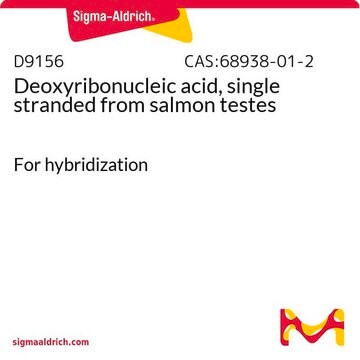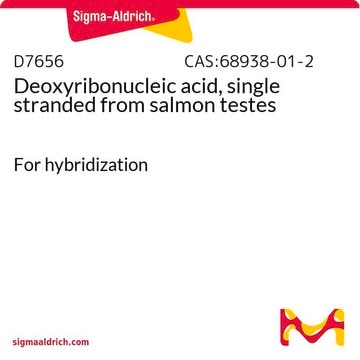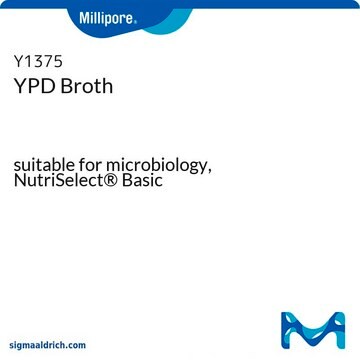YEAST1
Yeast Transformation Kit
reagents for introducing plasmid DNA into yeast
Synonyme(s) :
lithium acetate yeast transformation
About This Item
Produits recommandés
Qualité
for molecular biology
Niveau de qualité
Utilisation
kit sufficient for >100 standard transformations
Technique(s)
transformation: suitable
Conditions d'expédition
dry ice
Température de stockage
−20°C
Catégories apparentées
Description générale
Application
Caractéristiques et avantages
- Easy and ready-to-use
- Requires as little as 10 ng of plasmid DNA
- Flexibility for any strain of yeast
- Sufficient for over 100 standard transformations
Composants
- Transformation Buffer; 100 ml; 100 mM lithium acetate, 10 mM Tris HCl, pH 7.6, and 1 mM EDTA
- Plate Buffer; 100 ml; 40% PEG, 100 mM lithium acetate, 10 mM Tris HCl, pH 7.5, 1 mM EDTA
- Deoxyribonucleic acid from salmon teste, 10 mg/ml; 2 x 1 ml
- Control Yeast Plasmid DNA pRS316 carrying the ura gene; 10 μg
- Yeast Synthetic Drop-out Medium Supplement Without Uracil; 1 g
Principe
Produit(s) apparenté(s)
Code de la classe de stockage
10 - Combustible liquids
Point d'éclair (°F)
Not applicable
Point d'éclair (°C)
Not applicable
Certificats d'analyse (COA)
Recherchez un Certificats d'analyse (COA) en saisissant le numéro de lot du produit. Les numéros de lot figurent sur l'étiquette du produit après les mots "Lot" ou "Batch".
Déjà en possession de ce produit ?
Retrouvez la documentation relative aux produits que vous avez récemment achetés dans la Bibliothèque de documents.
Les clients ont également consulté
Articles
Transformation introduces exogenous DNA into cells, a fundamental genetic modification process demonstrated in Streptococcus pneumoniae.
Transformation introduces exogenous DNA into cells, a fundamental genetic modification process demonstrated in Streptococcus pneumoniae.
Transformation introduces exogenous DNA into cells, a fundamental genetic modification process demonstrated in Streptococcus pneumoniae.
Transformation introduces exogenous DNA into cells, a fundamental genetic modification process demonstrated in Streptococcus pneumoniae.
Protocoles
The selection of plasmids in yeast is based on the use of auxotrophic mutant strains, which cannot grow without a specific medium component (an amino acid, purine, or pyrimidine)
Yeasts are considered model systems for eukaryotic studies as they exhibit fast growth and have dispersed cells.
Notre équipe de scientifiques dispose d'une expérience dans tous les secteurs de la recherche, notamment en sciences de la vie, science des matériaux, synthèse chimique, chromatographie, analyse et dans de nombreux autres domaines..
Contacter notre Service technique









